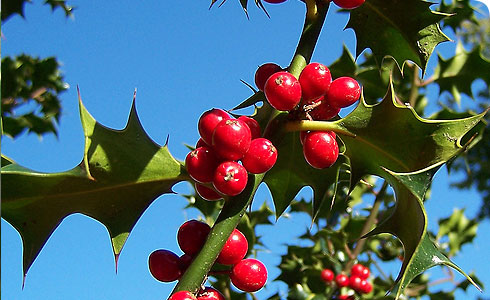Ilex aquifolium (holly)
Ilex aquifolium is 1 of 400 holly species, and is one of a collection of species and hybrids known as English hollies.
Its dark green leaves and red berries make it a popular house decoration winter, and for centuries it has been used to decorate houses and churches at Christmas.
Holly has limited commercial use, although the dense, spiny foliage makes it an effective hedging plant.
The wood is hard and creamy white and has been used for:
- veneers
- musical instruments
- walking sticks
- butter pats
- a substitute for mahogany (stained black)
Holly berries are avidly eaten by birds, particularly members of the thrush family, but are mildly poisonous to humans, causing vomiting.
Species detail
-

Taxonomy
Holly species are extremely variable. Find out more about Ilex aquifolium and the other English hollies.
-

Distribution
There are around 400 species of holly found in most regions of the world. Find out how they vary, and discover where you might find Ilex aquifolium.
-

Biology
Holly has thin bark and is intolerant of frost. It grows well in shade and is common in woodland. Find out more.
-

Folklore
Holly has been used for centuries to decorate houses in winter, and by the fifteenth century was a common decoration in homes and churches at Christmas. Discover some of the myths associated with the holly bush.
Images

Holy tolerates shade and often grows as an untidy shrub in woodland.
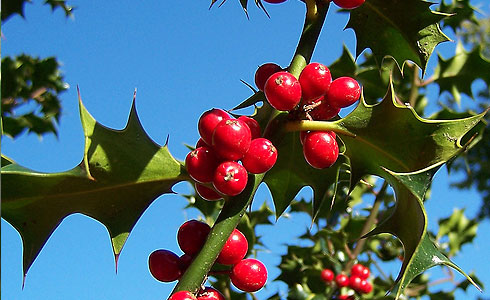
Holly berries are usually scarlet but can also be yellow depending on the variety.
© JR Press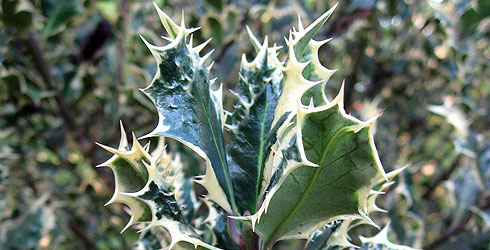
Ilex aquifolium ‘Ferox’, a cultivar with variegated and very spiny leaves.
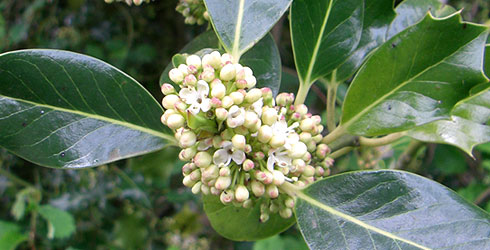
The male flowers have four fertile stamens.
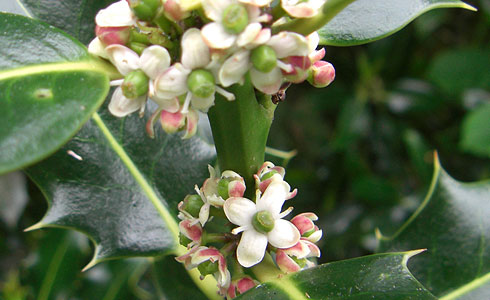
The female flowers have a prominent green ovary in the centre. They also have four sterile stamens but these are small and sterile.
© JR PressAbout the author
Bob Press
Former Associate Keeper of Botany
Department of Botany
A word from the author
'Holly is one of the most distinctive and easily recognised trees and it is one of the plants that is most closely associated with Christmas, but its use as a symbolic plant goes back much further.'
Toolbox
References
Howkins, C (2001). Holly. A tree for all seasons.
Handbook of Hollies. The American Horticultural Magazine 49 (4). 1970.
